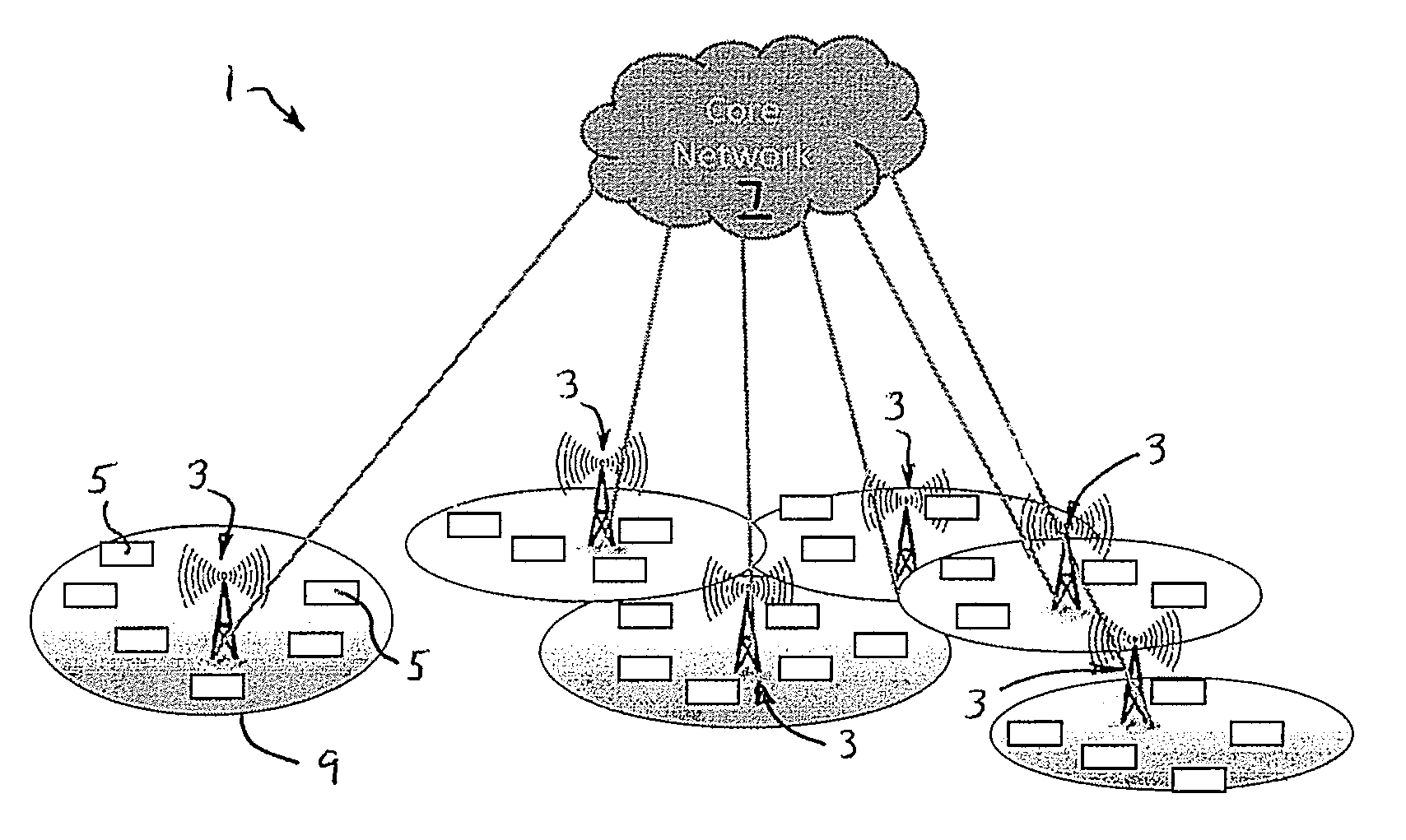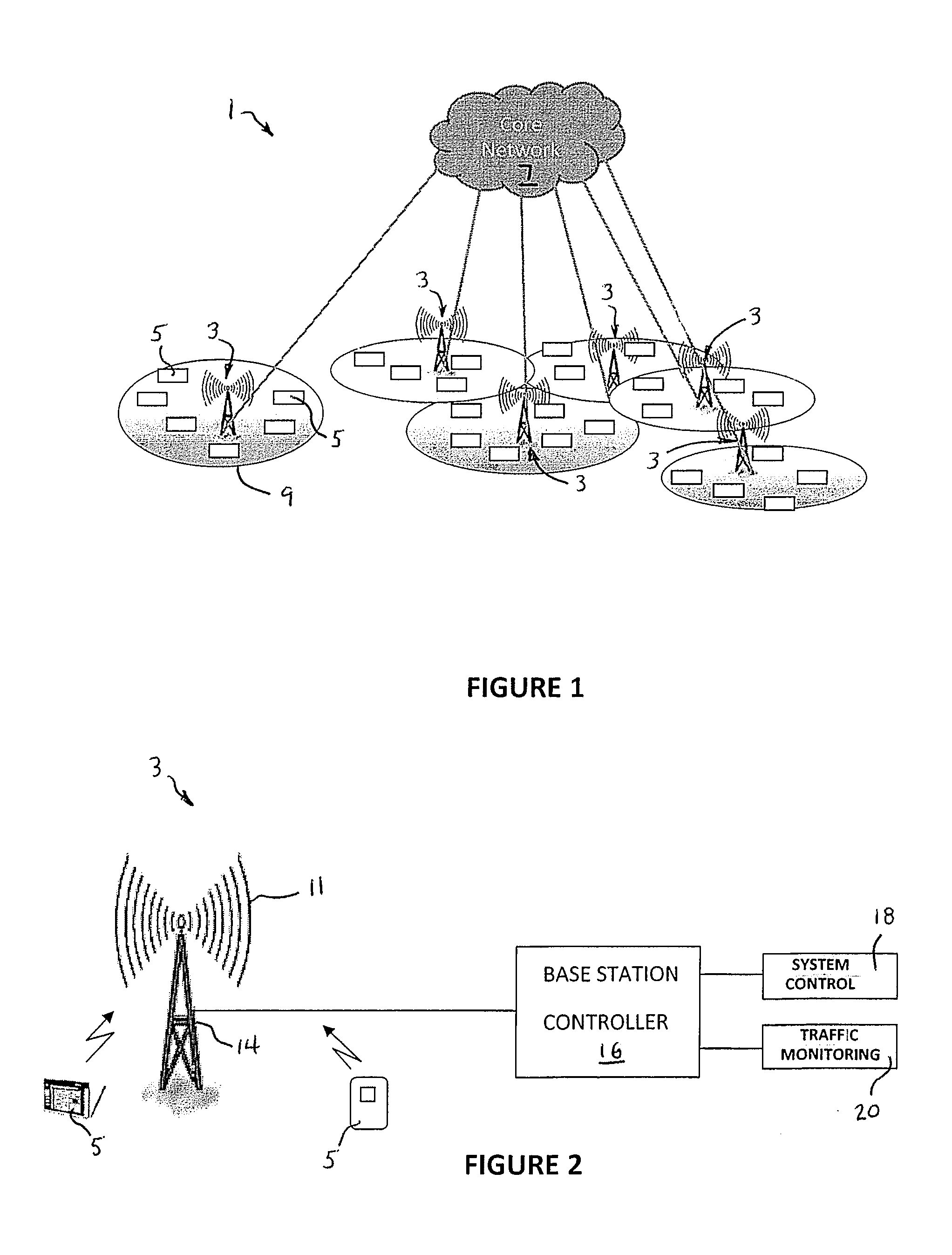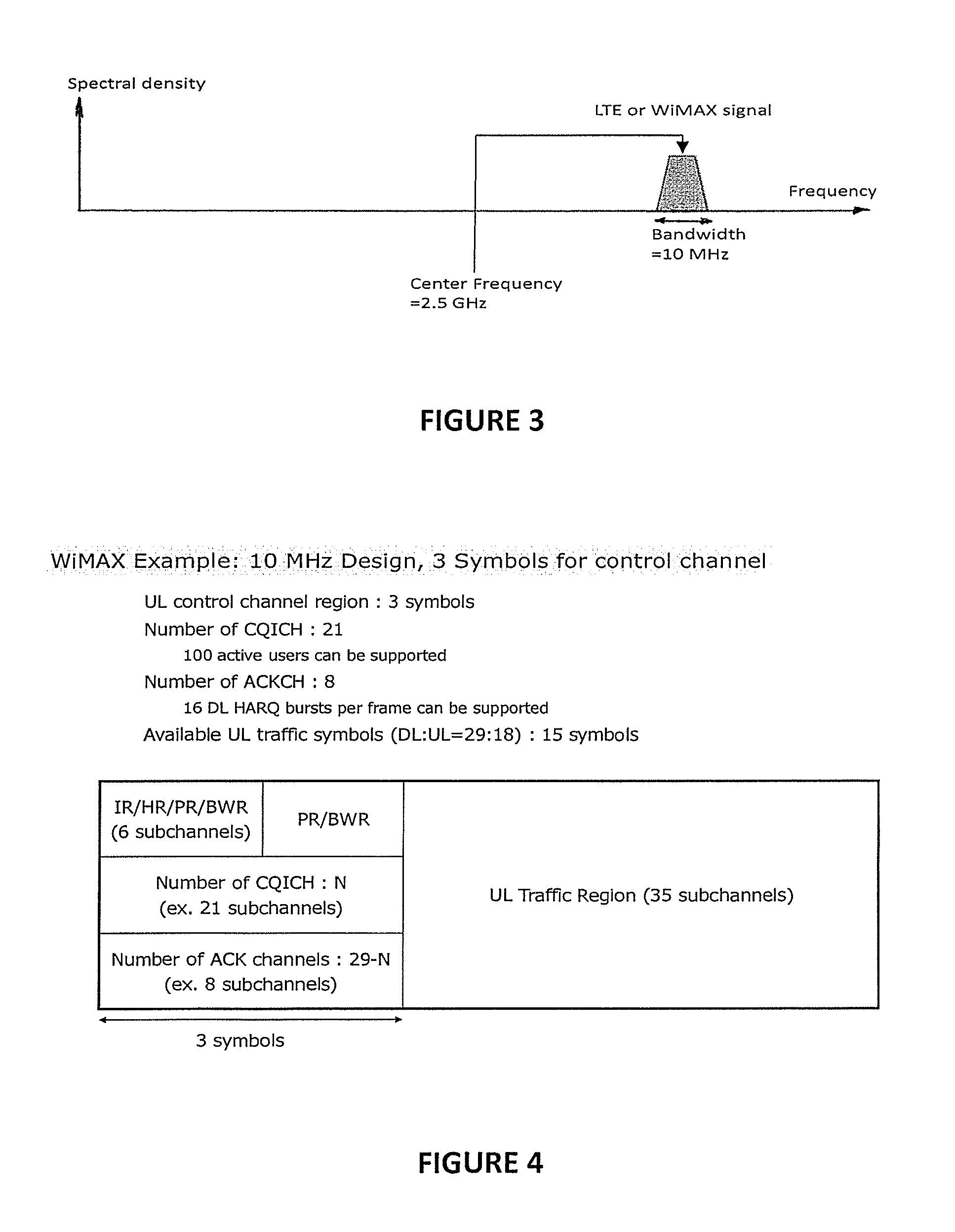System and method for dynamically balancing a maximum number of active remote device users between base stations
a remote device and maximum number technology, applied in the field of wireless communication systems, can solve the problems of service interruption, carrier coverage reduction, coverage problems, etc., and achieve the effect of increasing radio resources, reducing service interruptions, and increasing resources
- Summary
- Abstract
- Description
- Claims
- Application Information
AI Technical Summary
Benefits of technology
Problems solved by technology
Method used
Image
Examples
Embodiment Construction
[0027]As schematically illustrated in FIGS. 1 and 2, the system 1 of the invention comprises improved base stations 3 of a wireless local area network (LAN) that provides a radio communication link between remote device users 5 and a core network 7. The remote devices may be, for example, mobile phones or computers that are linked to the base stations via a WiFi, WiMAX or LTE port as indicated in FIG. 2. Each of the base stations 3 provides a radio link between all of the remote devices 5 within its area by way of its particular carrier 11. The coverages 9 provided by the various carriers 11 overlay one another in order to in order to provide continuous coverage to remote device users 5 traveling through the geographical area serviced by the LAN. Although the coverages 9 of the various base stations 3 are indicated as being static, the sizes of these coverages 9 can vary depending on the particular allocation of radio resources between the uplink control and uplink data channel regi...
PUM
 Login to View More
Login to View More Abstract
Description
Claims
Application Information
 Login to View More
Login to View More - R&D
- Intellectual Property
- Life Sciences
- Materials
- Tech Scout
- Unparalleled Data Quality
- Higher Quality Content
- 60% Fewer Hallucinations
Browse by: Latest US Patents, China's latest patents, Technical Efficacy Thesaurus, Application Domain, Technology Topic, Popular Technical Reports.
© 2025 PatSnap. All rights reserved.Legal|Privacy policy|Modern Slavery Act Transparency Statement|Sitemap|About US| Contact US: help@patsnap.com



